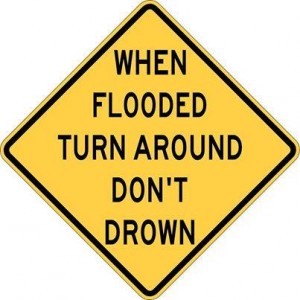Floods Cause Many Dangers
go.ncsu.edu/readext?1082102
en Español / em Português
El inglés es el idioma de control de esta página. En la medida en que haya algún conflicto entre la traducción al inglés y la traducción, el inglés prevalece.
Al hacer clic en el enlace de traducción se activa un servicio de traducción gratuito para convertir la página al español. Al igual que con cualquier traducción por Internet, la conversión no es sensible al contexto y puede que no traduzca el texto en su significado original. NC State Extension no garantiza la exactitud del texto traducido. Por favor, tenga en cuenta que algunas aplicaciones y/o servicios pueden no funcionar como se espera cuando se traducen.
Português
Inglês é o idioma de controle desta página. Na medida que haja algum conflito entre o texto original em Inglês e a tradução, o Inglês prevalece.
Ao clicar no link de tradução, um serviço gratuito de tradução será ativado para converter a página para o Português. Como em qualquer tradução pela internet, a conversão não é sensivel ao contexto e pode não ocorrer a tradução para o significado orginal. O serviço de Extensão da Carolina do Norte (NC State Extension) não garante a exatidão do texto traduzido. Por favor, observe que algumas funções ou serviços podem não funcionar como esperado após a tradução.
English
English is the controlling language of this page. To the extent there is any conflict between the English text and the translation, English controls.
Clicking on the translation link activates a free translation service to convert the page to Spanish. As with any Internet translation, the conversion is not context-sensitive and may not translate the text to its original meaning. NC State Extension does not guarantee the accuracy of the translated text. Please note that some applications and/or services may not function as expected when translated.
Collapse ▲ With much of North Carolina experiencing significant rainfall over the past few days, the likelihood of flooding is still high. Strong-to-severe storms are possible later in the day Thursday with damaging wind gusts and flash flooding being the main threats. Flood watches are in effect across much of the state, indicating conditions are favorable for floods to develop. Given the serious dangers associated with flooding, it’s crucial to be prepared. Stay informed by monitoring local media and weather radio for the latest updates.
With much of North Carolina experiencing significant rainfall over the past few days, the likelihood of flooding is still high. Strong-to-severe storms are possible later in the day Thursday with damaging wind gusts and flash flooding being the main threats. Flood watches are in effect across much of the state, indicating conditions are favorable for floods to develop. Given the serious dangers associated with flooding, it’s crucial to be prepared. Stay informed by monitoring local media and weather radio for the latest updates.
In addition to heavy rain, the combination of windy conditions and saturated soils increases the risk of downed trees and limbs, which could lead to power outages. It’s wise to prepare for potential power disruptions.
Locally heavy rain will also reduce visibility and can cause standing water on roads, making driving hazardous. Remember to slow down and exercise extra caution while on the road.
Flood Safety Tips
Here are some essential flood safety tips to keep in mind:
- Turn Around, Don’t Drown!®: Never walk or drive through floodwaters. Hidden dangers like washed-out roadways or submerged debris can be obscured by the water.
- If your car is surrounded by rising, but non-moving, floodwaters, abandon the vehicle and seek higher ground. However, do not exit your car if the water is moving.
- Just 6 inches of moving water can knock you off your feet, and 2 feet of moving water can sweep your vehicle away.
- If you’re in an area prone to flash flooding, move to higher ground immediately. Don’t wait for floodwaters to appear, as it may be too late.
Recovering after a disaster can be very trying. If you are impacted by flooding from the recent storms, NC State Extension has many Recovery Resources prepared to help you deal with the process of recovery safely.


